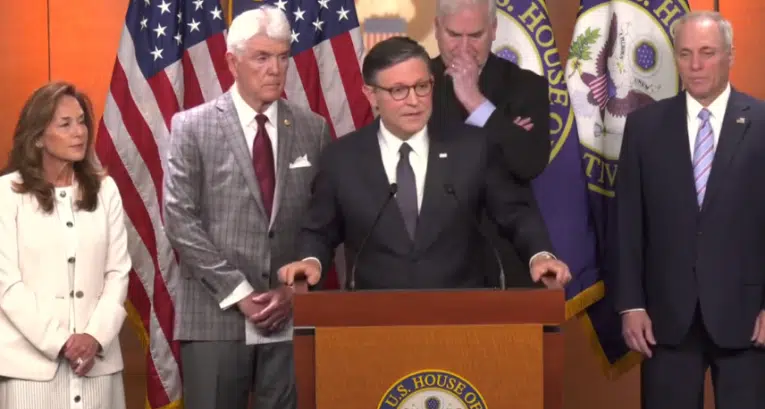By Rick Manning
Washington D.C. economy watchers were holding their collective breaths waiting for the Labor Department’s Bureau of Labor Statistics to release its January surveys measuring individual employment and business hiring reports and the results were somewhat predictable.
A huge gain in jobs created in the private sector of 296,000 was reported by BLS, while the data from the individual household survey was skewed by the partial government shutdown. Here is how BLS explains it: “Both the unemployment rate, at 4.0 percent, and the number of unemployed persons, at 6.5 million, edged up in January. The impact of the partial federal government shutdown contributed to the uptick in these measures. Among the unemployed, the number who reported being on temporary layoff increased by 175,000. This figure includes furloughed federal employees who were classified as unemployed on temporary layoff under the definitions used in the household survey.”
In addition, the Bureau also revises the baselines for the surveys at the start of every year, which always skews the household survey in January causing headaches for those trying to compare apples to oranges and derive meaning from the individual job report numbers.
While it may seem like a bit of a cop-out, these two factors make analysis a bit more of a crap shoot than it normally is, however, there is one key factor that can be fairly asserted.
First, the number of people employed full-time should jump dramatically on a month to month basis in the February report due in twenty-eight days. This is because all of those furloughed government workers should be back on their full-time job when the February survey is taken baking in more than 300,000 job gains into the cake without anything else happening.
The continued private sector job creation expansion flies in the face of expectations of many who expected peak employment to have occurred. This is particularly good news for workers as competition for labor will continue to increase making the 3.2 percent wage gains of the past year look more like a norm than an anomaly. With inflation only running at 1.9 percent in 2018, the 1.3 percent spread between pay increases and the devaluation of the money is a real pay increase rather than one that is all eaten by the cost of living rising.
Unfortunately, due to the changed methodologies for determining the overall workforce composition between 2018 and January 2019, it is not yet possible to determine the labor participation rate for the all-important 16-64 year-old age group, which is the driver of the economy. This matters because since a 1997 labor participation high amongst this group of 77.37 percent, participation has dropped precipitously in these prime working ages down to 72.95 percent in December of 2016. In the first two-years of the Trump presidency, the labor participation rate for this age group has increased to 73.64 percent as of December.
What does this mean?
At the end of 2016, there were approximately 9 million people aged 16-64 who would have been in the labor force had the participation rate remained the same, but who have simply disappeared from the workforce. When combined with an aging population, this meant that fewer and fewer Americans were working in effect to support a growing population. The upward move in labor participation in this huge population under Trump means 1.4 million of these 16-64 year-olds entered the labor force who would not have been there if the participation rate had not grown. This calculation is bolstered by same report data which shows that 16-64-year-olds not in the labor force dropped by 1.1 million people. The bottom line is that Americans are re-entering the labor force reversing a 20-year trendline that was disastrous for the future.
But it also shows that there is much still to do, as approximately 7.7 million of the 16-64 group who would have been in the workforce if the participation rate was at 1997 levels are still on the sidelines, showing the room for growth within our own domestic labor force to meet the needs of the on-going job boom.
It is fair to anticipate that a combination of naturally occurring increased wages and the continued growth of career-oriented jobs in areas like the manufacturing sector, which has shown a 454,000 job gain since January 2017, will attract some of those previously sidelined back into the economy.
One important side note, it is incredible that the number of manufacturing jobs in the United States was the same in January 2009 and January 2018 at 12.56 million, while the rest of the private job numbers increased by just under 14 million over the same period. This decade-long hollowing out of the manufacturing sector was a deliberate federal government policy combining the giant sucking sound of jobs being transferred overseas due to trade deals designed for that very purpose and the Obama administration’s regulatory regime and business taxes designed to make it unprofitable to make it in America.
Now, in Jan. 2019, it’s up to 12.8 million. It is the toxic impacts of these policies which President Trump has successfully attacked, and this is why wages are rising, jobs are plentiful and people have renewed hope that they can achieve the American dream.
Rick Manning is the President of Americans for Limited Government.






